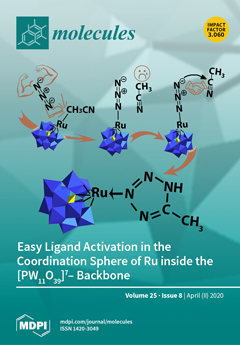Lithium-sulfur batteries are very promising next-generation energy storage batteries due to their high theoretical specific capacity. However, the shuttle effect of lithium-sulfur batteries is one of the important bottlenecks that limits its rapid development. Herein, physical and chemical dual adsorption of lithium polysulfides
[...] Read more.
Lithium-sulfur batteries are very promising next-generation energy storage batteries due to their high theoretical specific capacity. However, the shuttle effect of lithium-sulfur batteries is one of the important bottlenecks that limits its rapid development. Herein, physical and chemical dual adsorption of lithium polysulfides are achieved by designing a novel framework structure consisting of MnO
2, reduced graphene oxide (rGO), and carbon nanotubes (CNTs). The framework-structure composite of MnO
2/rGO/CNTs is prepared by a simple hydrothermal method. The framework exhibits a uniform and abundant mesoporous structure (concentrating in ~12 nm). MnO
2 is an α phase structure and the α-MnO
2 also has a significant effect on the adsorption of lithium polysulfides. The rGO and CNTs provide a good physical adsorption interaction and good electronic conductivity for the dissolved polysulfides. As a result, the MnO
2/rGO/CNTs/S cathode delivered a high initial capacity of 1201 mAh g
−1 at 0.2 C. The average capacities were 916 mAh g
−1, 736 mAh g
−1, and 547 mAh g
−1 at the current densities of 0.5 C, 1 C, and 2 C, respectively. In addition, when tested at 0.5 C, the MnO
2/rGO/CNTs/S exhibited a high initial capacity of 1010 mAh g
−1 and achieved 780 mAh g
−1 after 200 cycles, with a low capacity decay rate of 0.11% per cycle. This framework-structure composite provides a simple way to improve the electrochemical performance of Li-S batteries.
Full article


